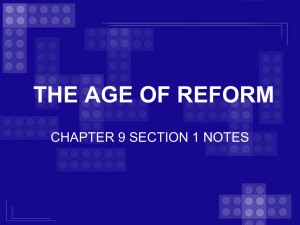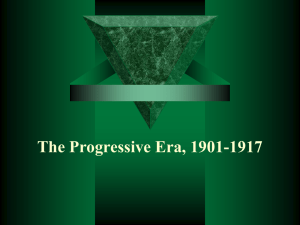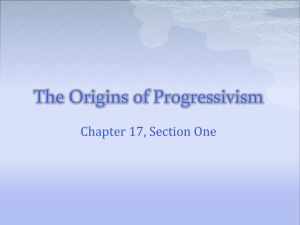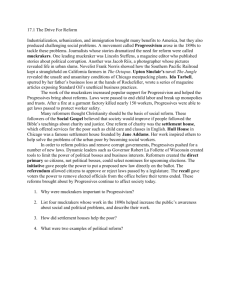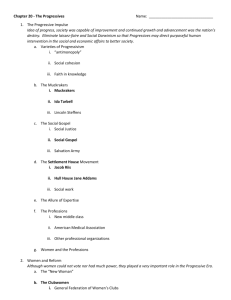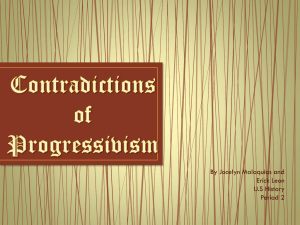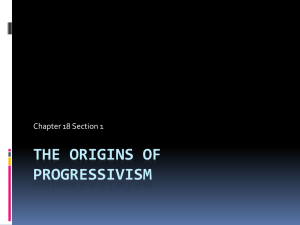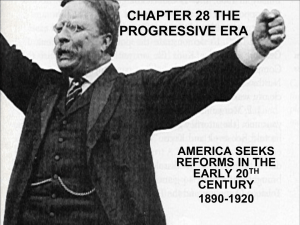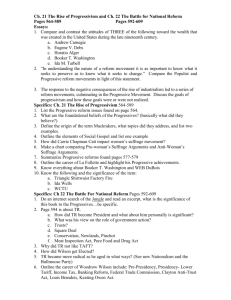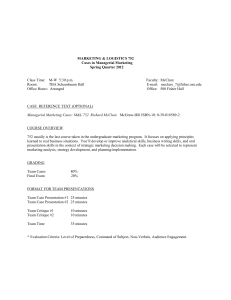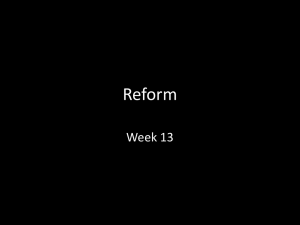Chapter 9 section 1 notes
advertisement
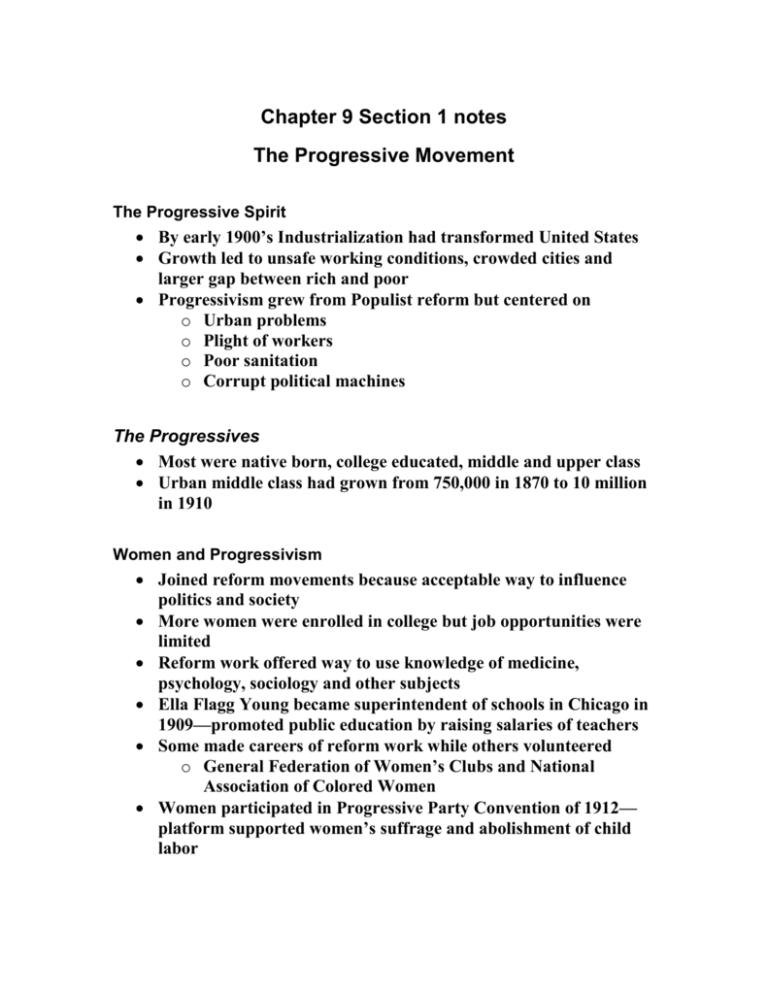
Chapter 9 Section 1 notes The Progressive Movement The Progressive Spirit By early 1900’s Industrialization had transformed United States Growth led to unsafe working conditions, crowded cities and larger gap between rich and poor Progressivism grew from Populist reform but centered on o Urban problems o Plight of workers o Poor sanitation o Corrupt political machines The Progressives Most were native born, college educated, middle and upper class Urban middle class had grown from 750,000 in 1870 to 10 million in 1910 Women and Progressivism Joined reform movements because acceptable way to influence politics and society More women were enrolled in college but job opportunities were limited Reform work offered way to use knowledge of medicine, psychology, sociology and other subjects Ella Flagg Young became superintendent of schools in Chicago in 1909—promoted public education by raising salaries of teachers Some made careers of reform work while others volunteered o General Federation of Women’s Clubs and National Association of Colored Women Women participated in Progressive Party Convention of 1912— platform supported women’s suffrage and abolishment of child labor Progressive Issues Dangerous workplace Major concern was way corporate America did business In 1910 70% of industrial workers had 54 hour work weeks o Higher accident rates 25% of one Pittsburgh steel mill workforce injured or killed per year from 1907-1910 Demand limits on corporate power o Promoted laws to limit monopolies and help small businesses o Called for 8 hour work day o Minimum wage o Safer work conditions o Abolishment of child labor Social Problems Wanted people to have greater control over government New election reforms and other reforms more responsive to desire of voters Inspired by spirit of social justice o Believed in power of science and technology to solve social problems John Dewey “education should prepare students to function in society, not just give them factual information Inspiration for Reform Popular magazines such as Munsey’s and Everybody’s published stories about corruption in politics and business as well as social problems McClure’s Magazine founded by S.S. McClure in 1893 Teddy Roosevelt coined term Muckrakers to describe investigative journalists October 1902 McClure’s publishes Tweed Days in St Louis by Lincoln Steffens and Claude Wetmore—describes St. Louis’s political machine and comparison to Boss Tweed of New York Ida Tarbell writes series of 19 articles about “History of Standard Oil”—uncovering details about corrupt practices of John Rockefeller—published in McClure’s o Ida never wanted to be associated with muckrakers—her father’s company had been bought out by Standard Oil Muckraking Books Lincoln Steffens writes Shame of the Cities in 1904—describes urban political corruption Ray Stannard Baker writes Following the Color Line in 1908— describes plight of African Americans Writers and Social Problems Novelists describe darker side of new industrial society’s effect on people Theodore Dreiser writes Sister Carrie (1900) and The Financier (1912)—describing workers brutalized by greedy business owners Edith Wharton describes how closed-mindedness of elite society leads heroine to social isolation and despair in The House of Mirth in 1905 The Promise of American Life published in 1909 by Herbert Croly argues that government should use regulatory and taxation power to promote welfare of its citizens Jane Addams Democracy and Social Ethics (1902) urges private citizens to show more social responsibility Although progressives wanted to transform society and its values they remained committed to Democracy for all citizens
